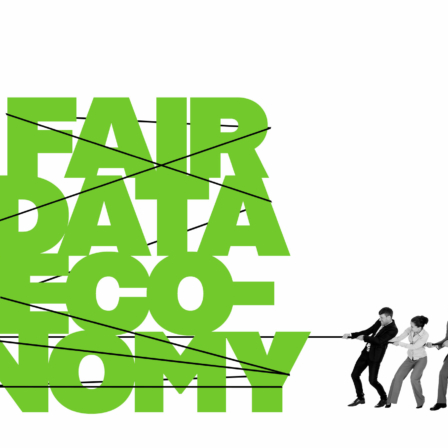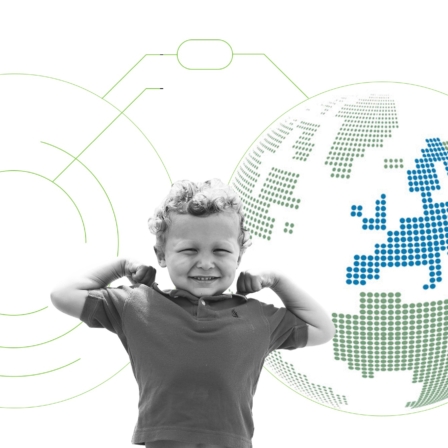As politicians struggle with the changing political landscape, advances in technology are playing a catalytic effect that can be both positive and negative. Greater digital connectivity holds the promise of new modes and models for citizens to engage with policy makers and policy-making, and vice versa. It offers new opportunities for civic participation and a more multi-level structure for delivering political accountability. But it is also creating new avenues for political disruption and polarisation that could test the stability of democratic systems in the near to medium-term.
Concerns about the durability of liberal democracy are not new and have been near constant throughout history. However, the distinctive factor in the modern era is technological change. The relationship between the disruption of established democratic systems and advances in technology has many different components and is evolving rapidly.
Most obviously, digital technology is directly changing the means of democratic campaigning by, for example, shifting how parties pursue their goals, communicate with voters, raise money or build coalitions. The ways in which political actors use technology could create opportunities for greater citizen engagement and political responsiveness but could also raise challenges to the traditional practices of plural democracies.
On the positive side, there are several broad dimensions. Three are worth highlighting in particular: how technology can improve transparency and accountability; how it can support political mobilisation; and whether it can create more collaborative forms of democratic decision making.
Firstly, digital tools can improve the openness and inclusiveness of political institutions. In simple terms, this can mean making standard acts of democratic citizenship digital as a way to encourage participation, such as voting electronically, as Estonia has allowed since 2005. More broadly, citizens can now access more information than at any time before, scrutinise the actions of their representatives more simply, and observe the functions of democratic institutions with greater ease. It is easier than ever to check the voting record of a representative or scrutinise their financial support or outside interests.
Meanwhile, democratic institutions have the opportunity to radically enhance their openness and transform the transparency of law-making and governance. The UK parliament has set itself the challenge of being “fully interactive and digital” by 2020, including providing more information in real time and using digital communication to explain law-making.
Secondly, new communications media have increased the capacity for political mobilisation at a grassroots level. This comes in many different forms.
Social media can allow for the organisation of protests and demonstrations without requiring expensive infrastructure or capacity, empowering individuals to address large numbers of citizens directly. It creates new spaces for engagement and discourse. Online petitions can allow for the rapid aggregation of large numbers of people around a single cause, as the success of campaigning groups like Avaaz and 38 Degrees have demonstrated. Avaaz has over 45 million members, campaigning on more than 2,000 issues, and claims successes in driving forward global responses to climate change and environmental degradation.
While some people have dismissed so-called “clicktivism”, some democratic institutions have effectively adopted this model. In the UK, Parliament runs its own petition mechanism, with those receiving 10,000 signatures requiring a government response, and those gaining 100,000 considered for debate in Parliament. Since 2016, 68 petitions have gained a government response and nine have been debated in Parliament, with four more awaiting debate. Other examples have greater agenda setting power, such as in Finland which created a Citizens Initiative Act, enabling citizens to submit legal proposals to Parliament once they have 50,000 signatures. It was this process that led to the introduction of equal marriage legislation in Finland.
Studies suggest that many of the people engaged in these processes are younger voters, although there is also a risk that such initiatives tend to empower those who are already politically active as much as widening participation.
Beyond this mobilisation, digital platforms can enable more collaborative and deliberative models of democracy. To start with, digital technology enables new forms of co-decision making and agenda setting. One example is the Brazilian National Congress e-Democracia portal, which gives citizens the opportunity to engage with different aspects of the law-making process. Particularly notable is the mechanism around drafting of new bills, using a wiki platform for legislation that enables citizens to see the wording of new proposals, track amendments and suggest new text. In Spain, following its success in municipal elections, Podemos created the “Decide Madrid” platform, an open channel through which the public can make proposals for new laws, participate in debates, and contribute to budgetary decision-making, with 200,000 people eventually registering.
These examples highlight the new experiments in democratic citizenship and participation which are taking place in many democracies, but also reinforce the view that many democracies are still in the relatively early stages of adapting digital communications and platforms for democratic politics.
While technological change offers these opportunities, it is also re-shaping democracies by changing the very nature of advanced economies and societies in a way that challenges basic components of democratic politics. Four challenges in particular, are worth highlighting: how we communicate; what we read; how we think; and how we work.
Firstly, there are growing concerns about the distortive effects of social media on the way people interact. Much attention has been paid to the transformation of communications and the growing dominance of a relatively small number of social media platforms as the channel for political news and the venue for democratic discourse.
There are several concerns at play. Combined, they can make social networks function as echo chamber. Content algorithms, tailored to an individual user’s data, can reinforce prejudices by highlighting information or stories which are more likely to match a person’s world view or ideology and filtering out those which may challenge or disagree with them. This is exacerbated by the tendency of some users to form communities and networks of likeminded individuals, reinforcing their exposure to content which reinforce existing worldview and biases.
Recent studies confirm the existence of the echo chamber phenomenon, and suggest its effects are more pronounced among those toward the edges of the political spectrum than in the centre-ground, implying social media drives and reinforces processes of polarisation. At a broad level, this diminishes the capacity of social groups to understand each other’s interests or perspectives, undermining social cohesion and risking conflict between different groups.
Secondly, there is a linked challenge around the capacity of social media to spread disinformation, hoaxes or conspiracy theories. While such concerns are not unique to the modern digital era of democracy, social media provides an amplifying effect and a filter bubble, aided by automation and bots.
One study of the 2016 US presidential election found that, in the three months leading up to the vote, false stories that favoured Donald Trump were shared more than 30 million times on Facebook (almost four times as many as those favourable to Hillary Clinton), and that over 50% of voters who recalled these stories believed them to be true. A second estimated that 1 in 4 Americans had visited a “fake news” website (i.e. a website promoting factually dubious articles). However, the vast bulk of traffic to these sites was concentrated among just 10% of the population, overwhelmingly of a highly conservative disposition. Meanwhile, the study concluded that “fact-checks of fake news almost never reached its consumers”. The capacity of democratic institutions and discourse to broker any degree of meaningful consensus is undermined when basic political facts are contested or disputed.
Third, the generation of enormous volumes of data combined with advanced processing power and machine learning may in the future create more structural challenges to the function of democratic societies. Algorithms already help to nudge consumer habits based on enormous volumes of data revealing how users think, feel and behave. Such influence could become a growing feature of democracies.
In a benign sense, individuals can be nudged towards more socially good or economically efficient decisions. But a more malign use could see efforts to remotely control political preferences and voting decisions at a mass level. As a group of European computer scientists and academics have warned, “The more is known about us, the less likely our choices are to be free and not predetermined by others.” Large scale manipulation would be difficult to detect, they argue.
Fourth, automation threatens to make whole sectors of the workforce redundant, replaced with more efficient algorithms and machines. One study suggests 47% of American workers are in roles at high risk of automation. The effects of this employment revolution are disputed; some economists are more optimistic about the capacity of technology to create jobs while making others obsolete. However, there are reasons to think the pace of change and the level of disruption in the decades ahead is of an order of magnitude greater than previous periods of economic change, such as 19th century industrialisation.
Democratic societies whose social contract relies on fundamental concepts like work, employment and income tax will find that contract tested if sections of society become economically unproductive or idle. Such an economic realignment might also advance problems of inequality, with richer individuals better able to take advantage of technological innovation – with all the social and economic privileges those may bring – and others simply left behind.
These are only some of the challenges and opportunities that technological advances create for democratic governance. The fact that they are arising alongside the erosion of popular support for Europe’s traditional democratic political parties means that technology is likely to have profound impacts both on the functioning and resilience of democratic systems of governance in Europe in the years ahead. It also puts a critical premium on designing digital platforms and processes that will enhance rather than erode democratic institutions and citizen engagement and empowerment.
Questions
- Can citizens have meaningful control over their data?
- How can we democratize control of data when data crosses borders and jurisdictions?
- Is the political economy of Big Tech inherently bad for democracy?
Sitra’s guest atricles give a voice to the players of the future in different fields. They do not (necessarily) directly link to Sitra’s work or agenda, but are the authors’ thoughts on current issues that relate to the themes Sitra is passioned about.









LATEST
Read more